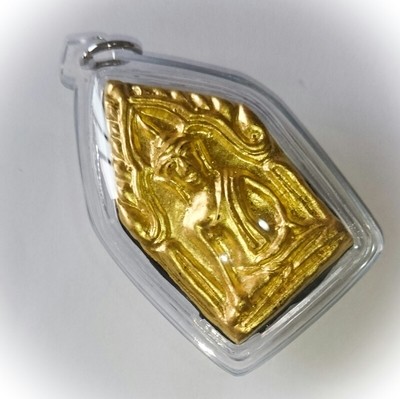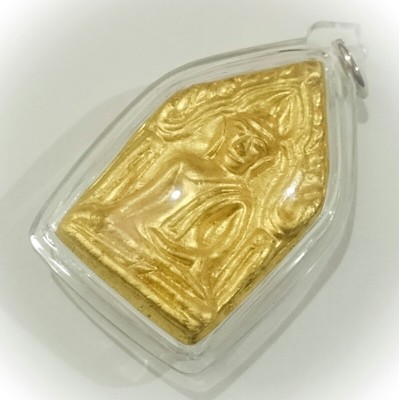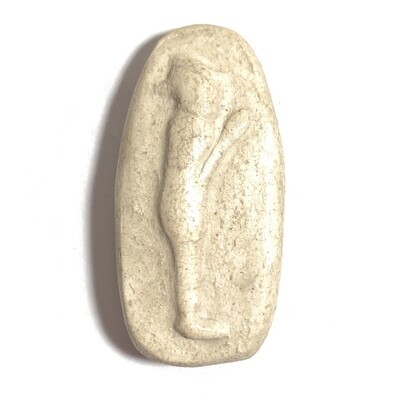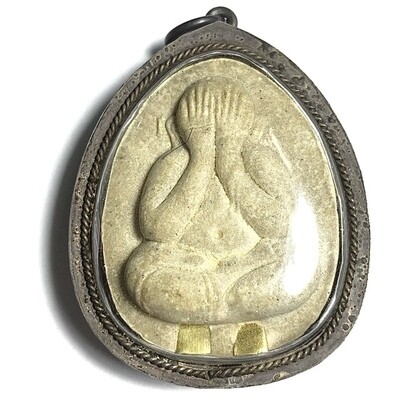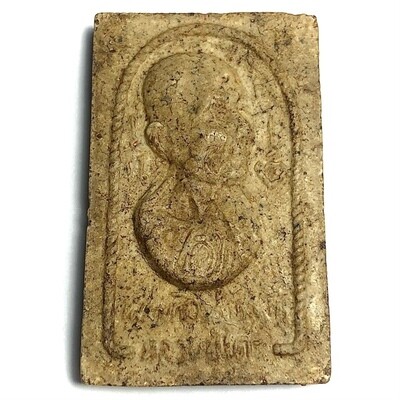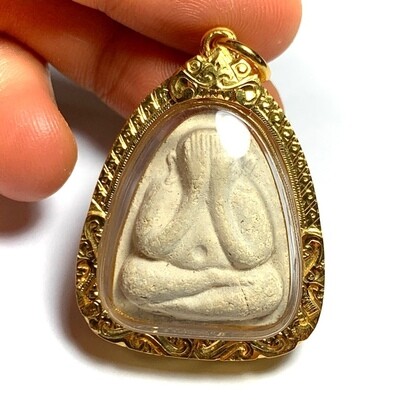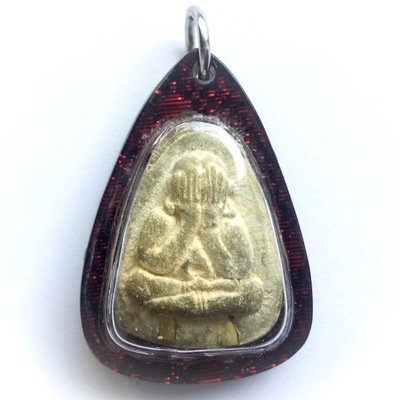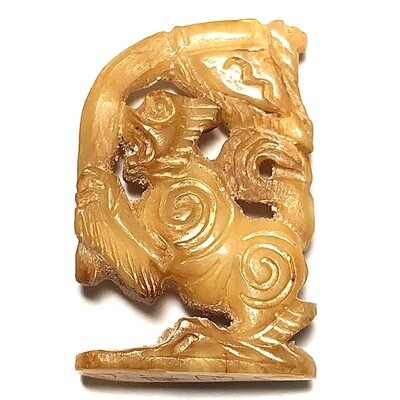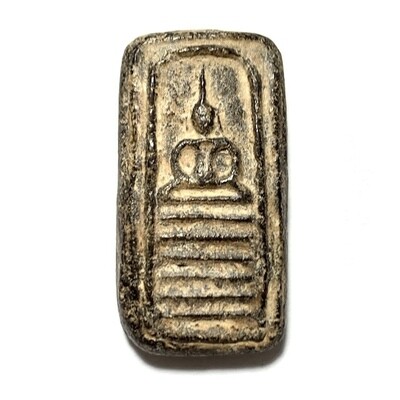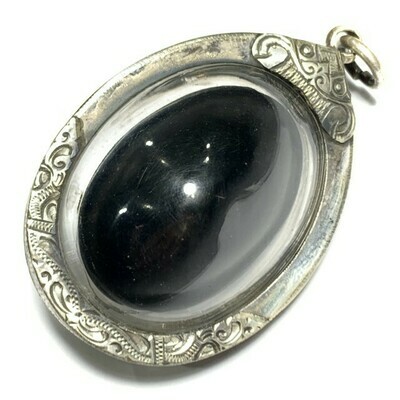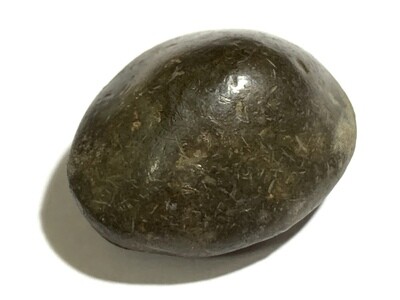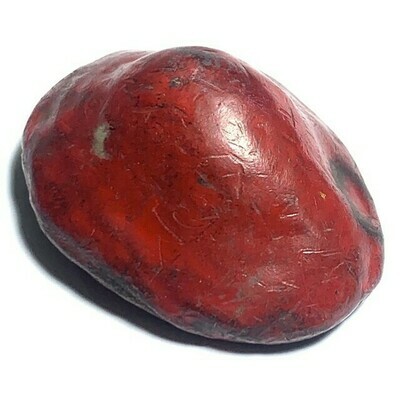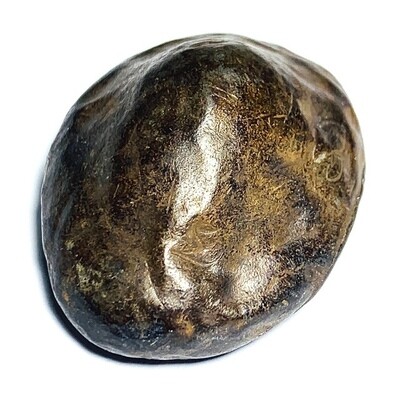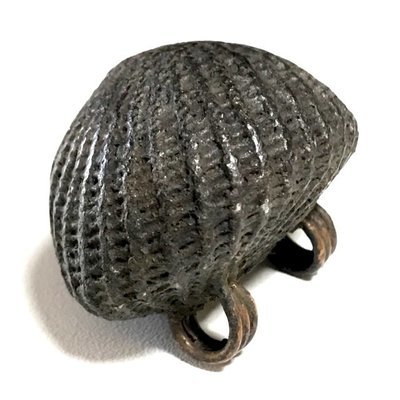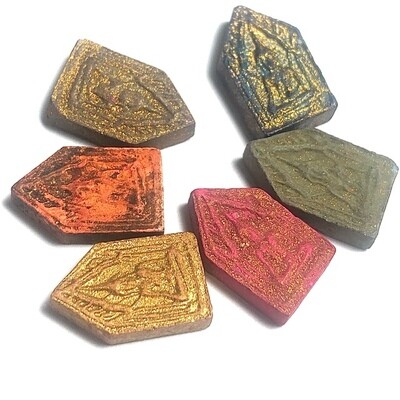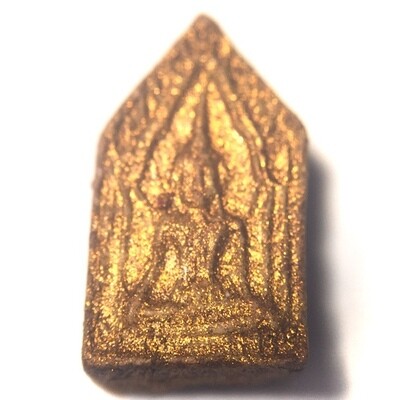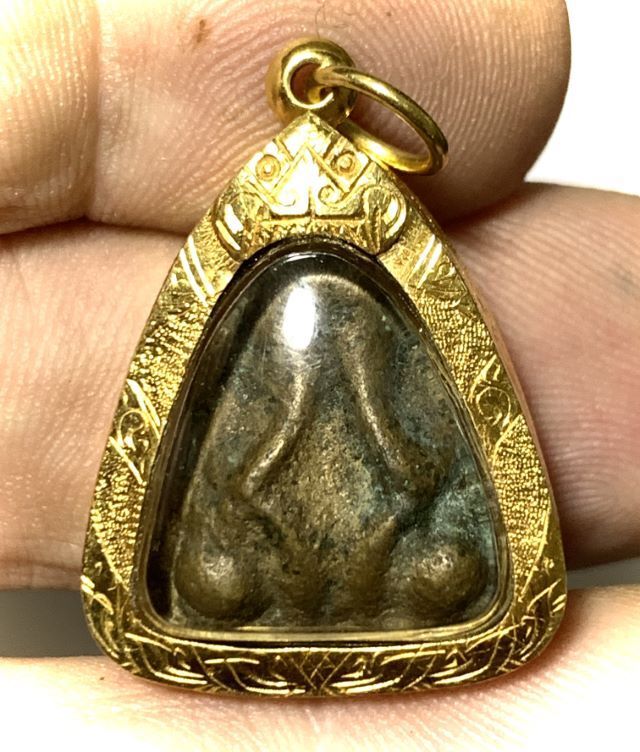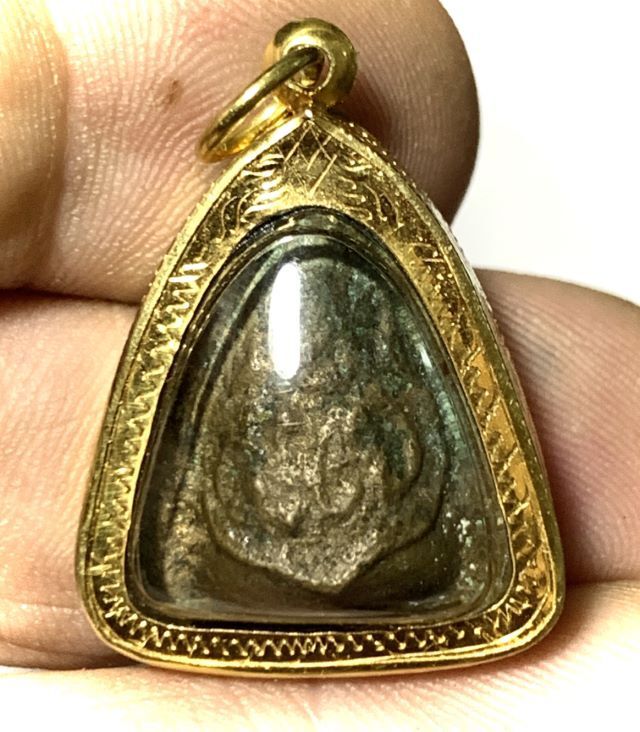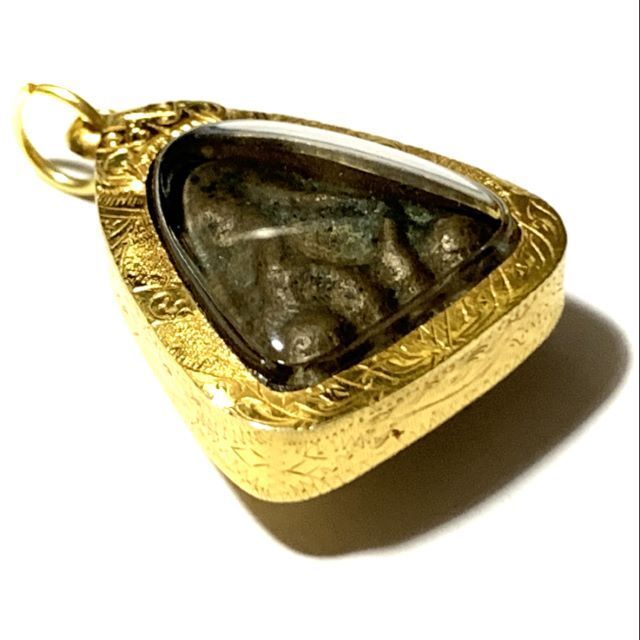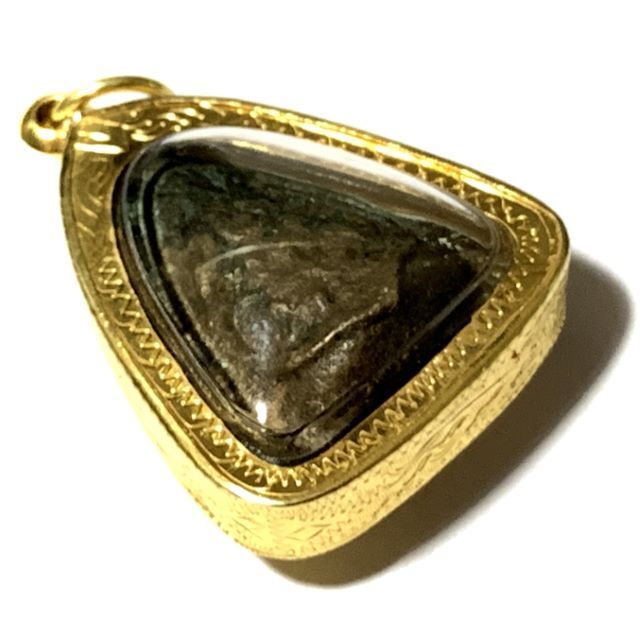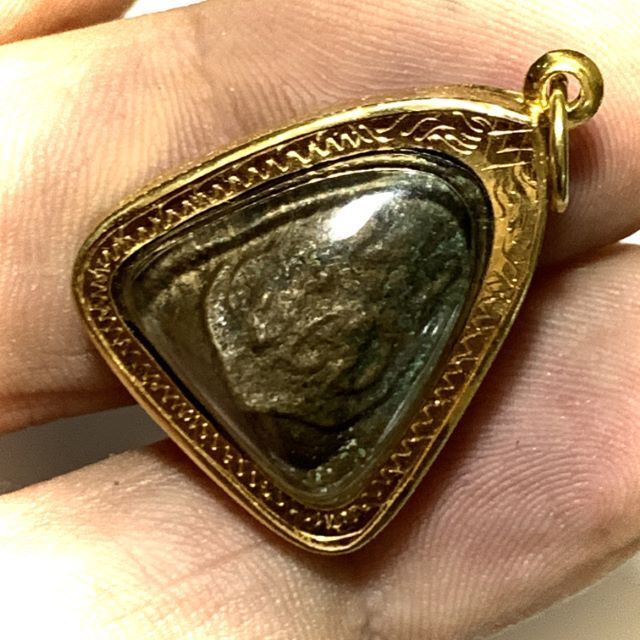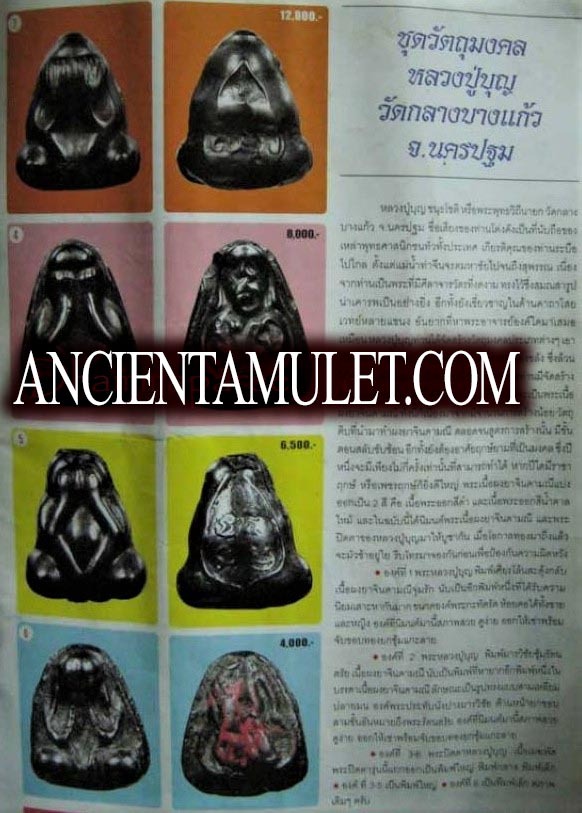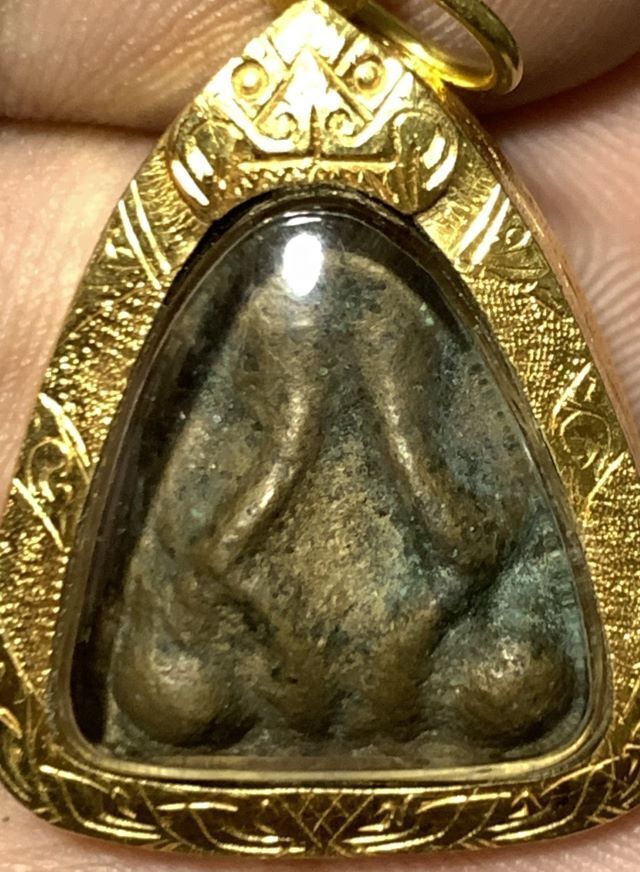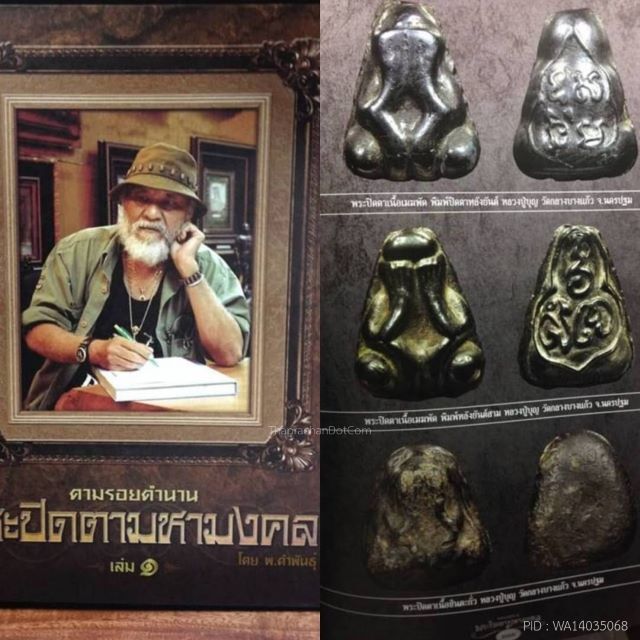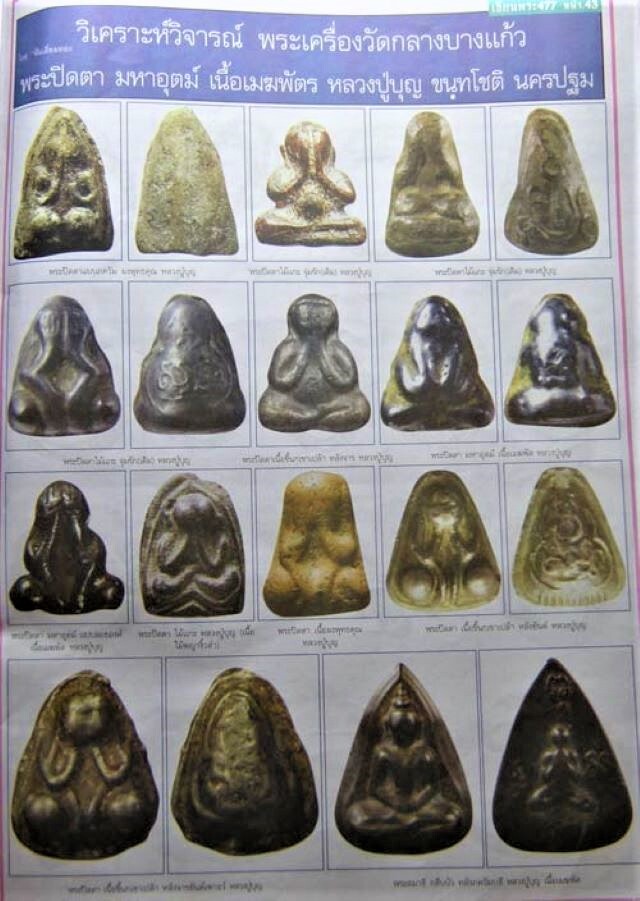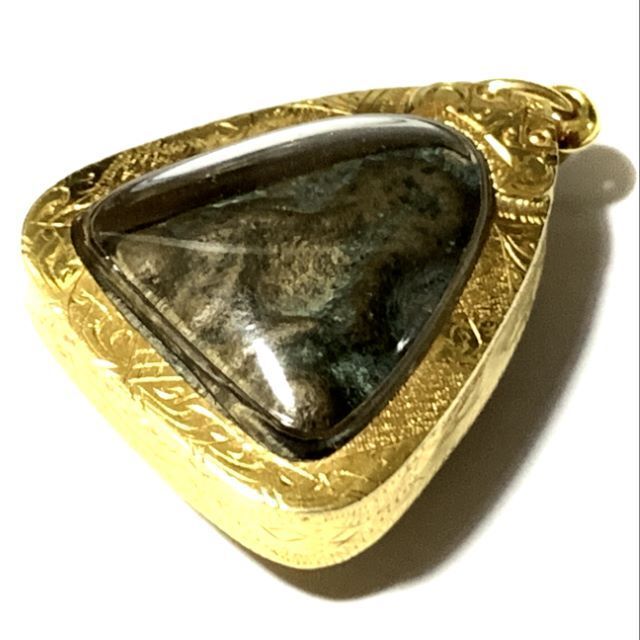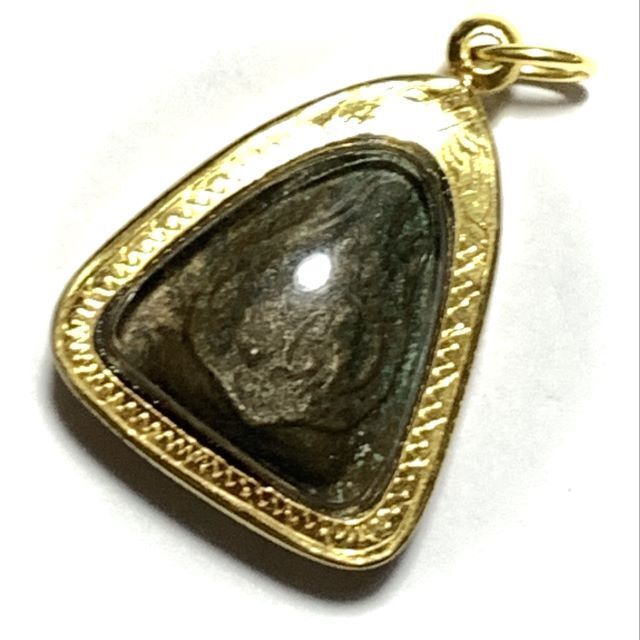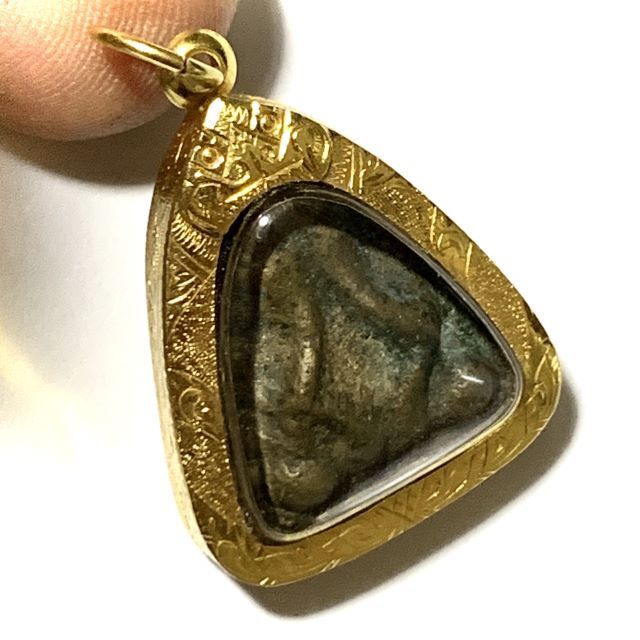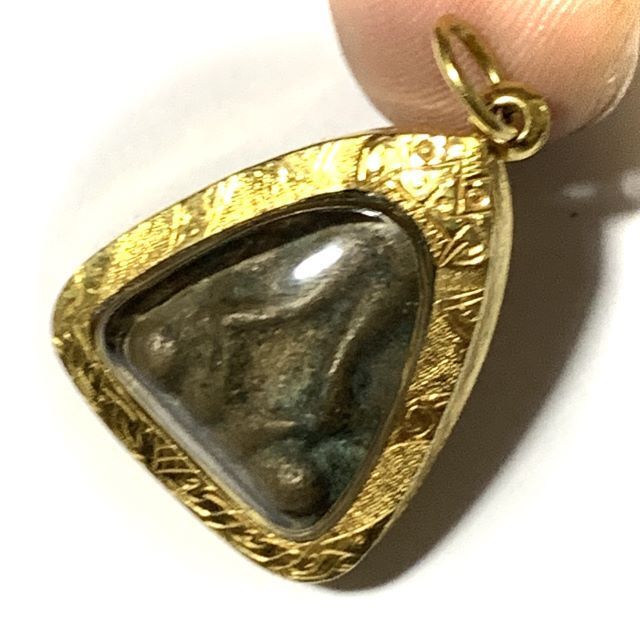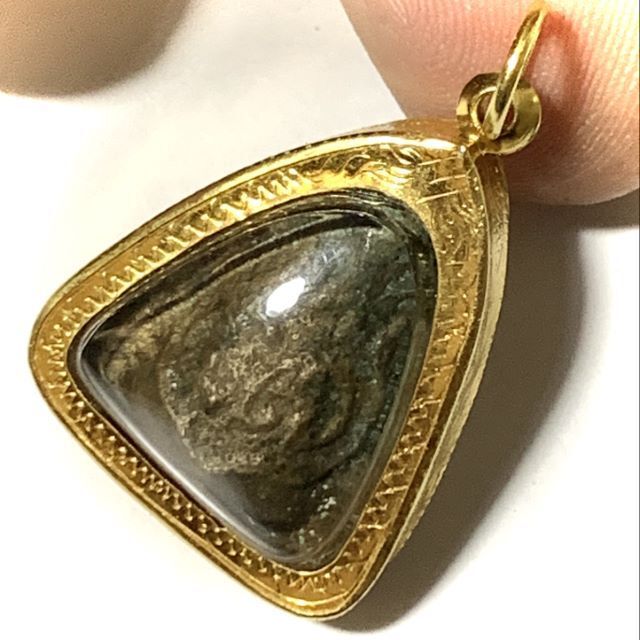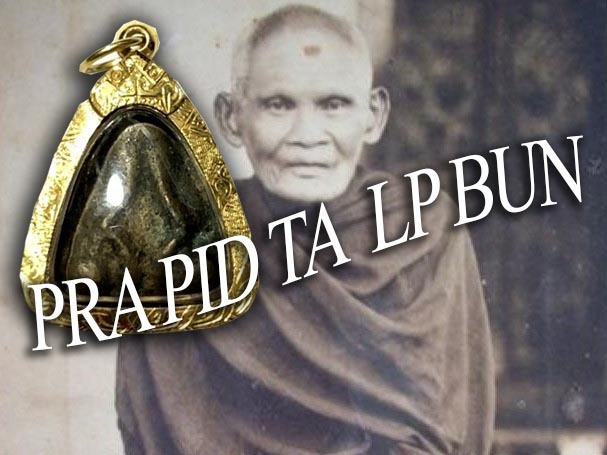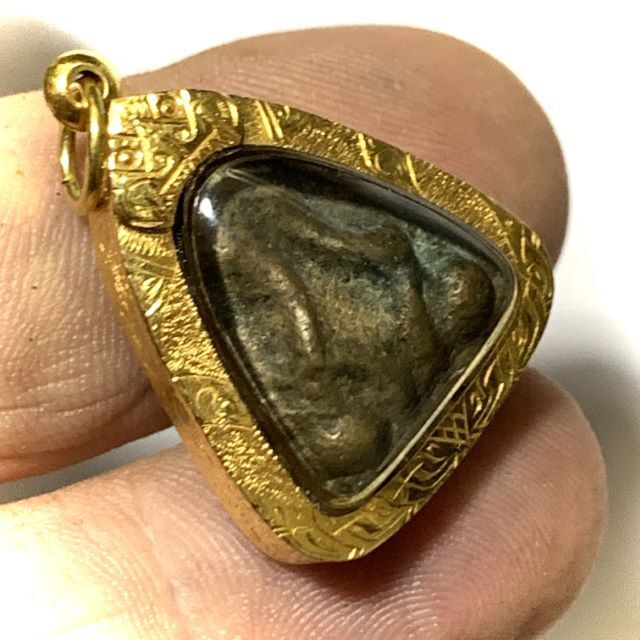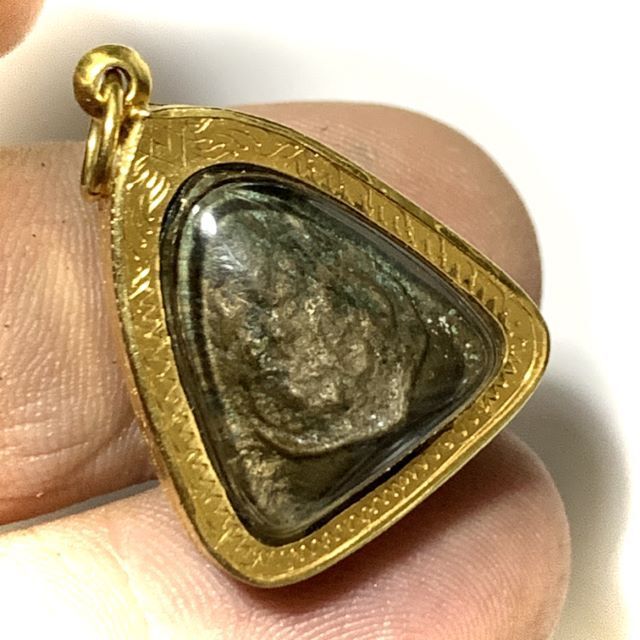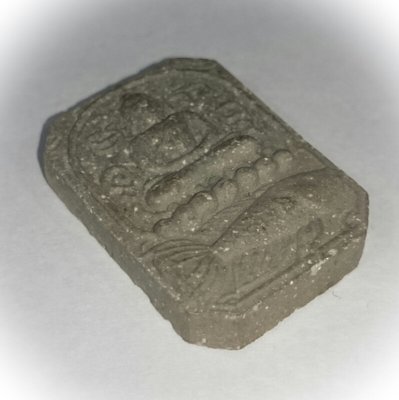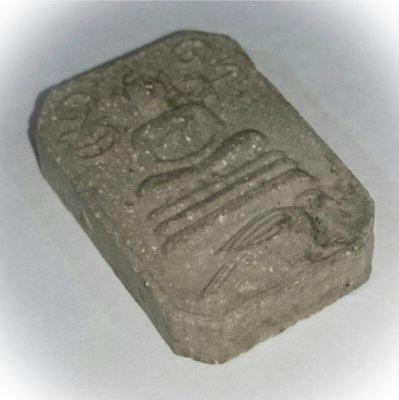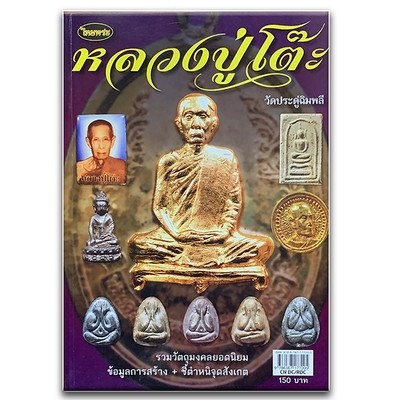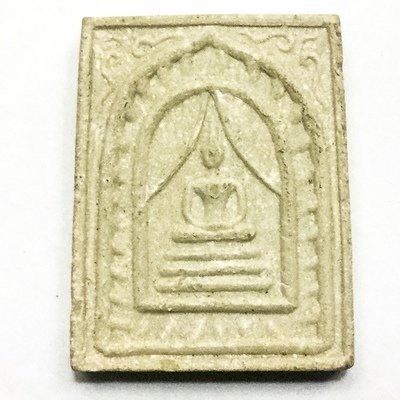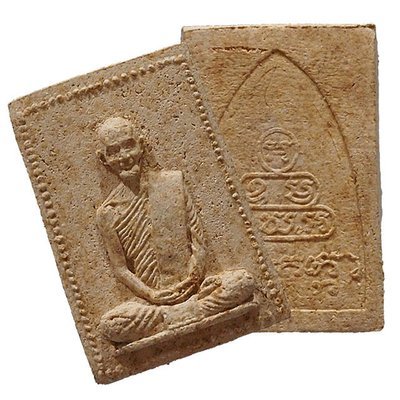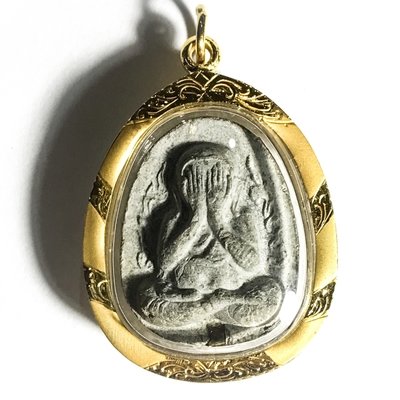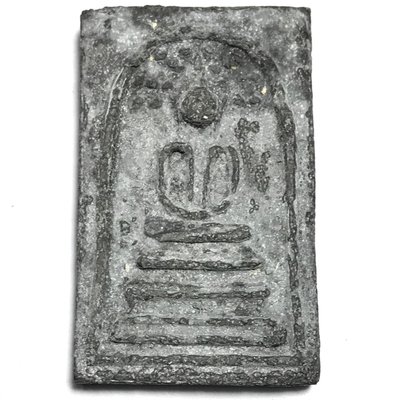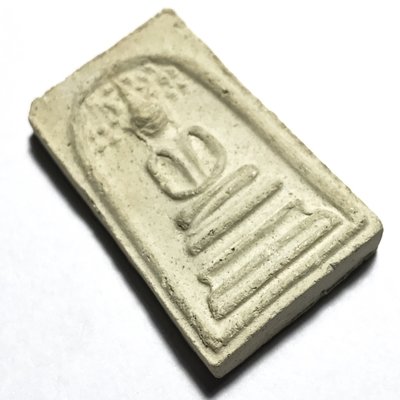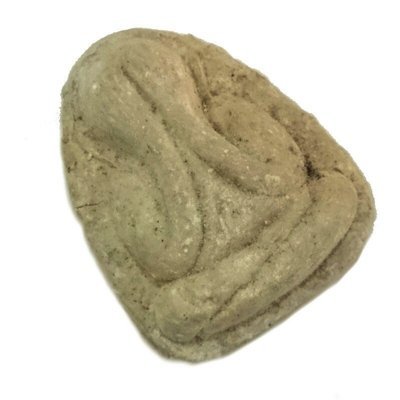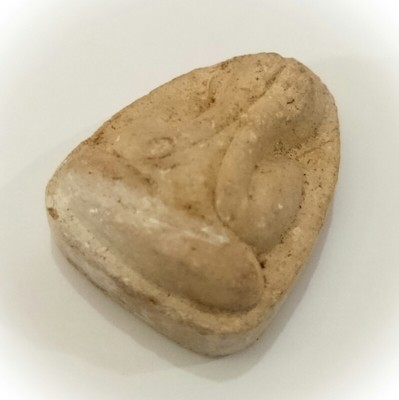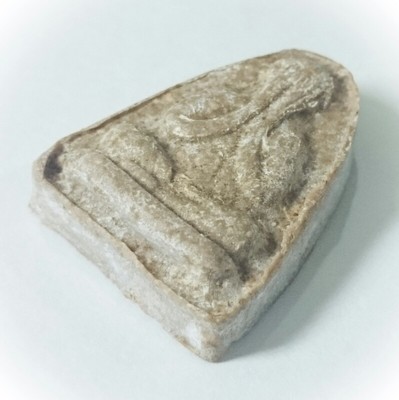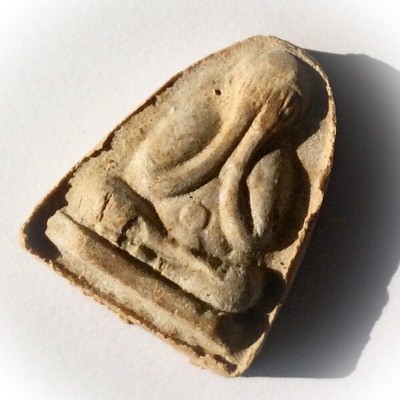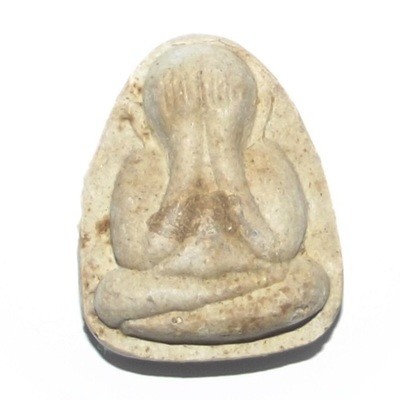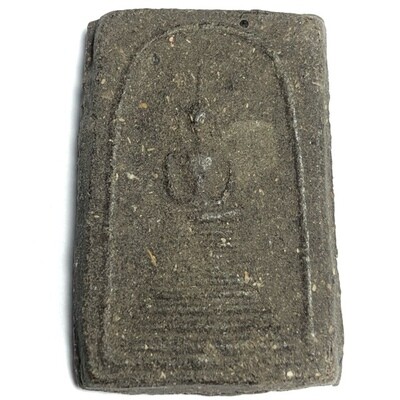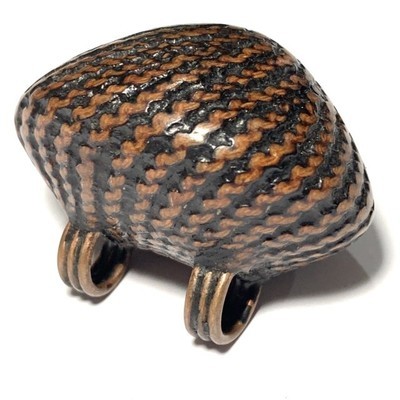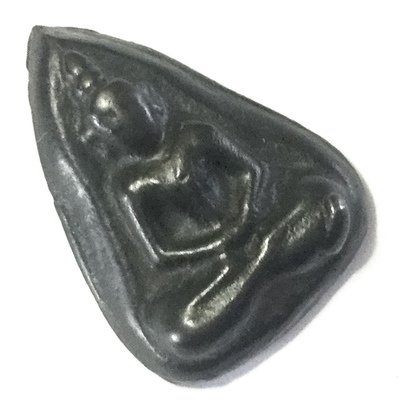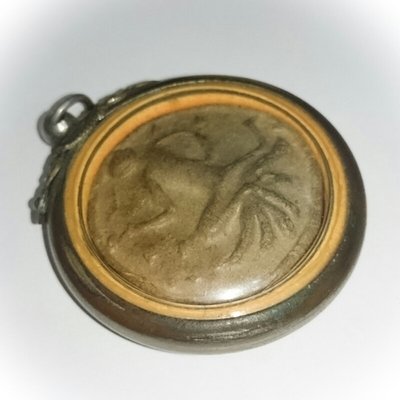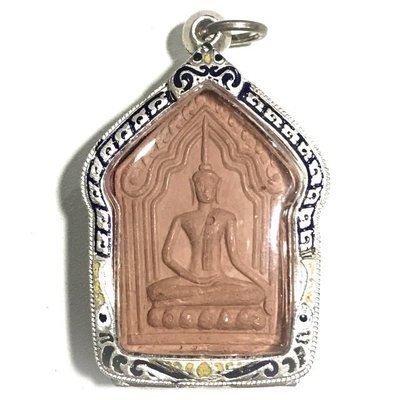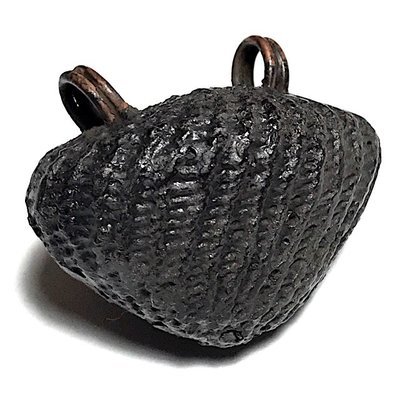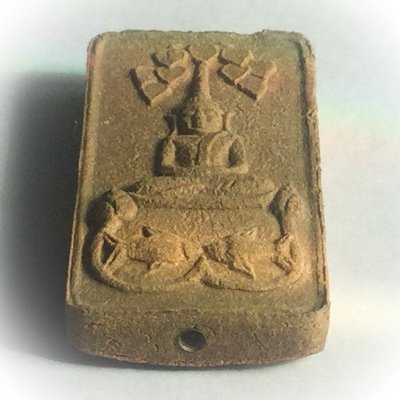A pristinely kept and extremely rare Rian Mangorn Koo Nuea Nava Loha Pim Pised Dtok Sorng Code Ma Wat Pha Nong Lom Run Sao Ha Maha Sethee 5th Lunar Saturday Blessing Ceremony Edition Guru Monk Coin, released in 2543 BE, to raise funds for the Kuti Songk Monks Huts and improve the facilities at the temple of Wat Pha Nong Lom.
This model of Rian Mangorn Koo twin dragons Monk Coin is a very rare Pim Pised (Niyom preferred) and differs from the majority of Rian Mangorn Koo Wat Pha Nong Lom Edition coins in Nava Loha, because of the double code MA stamp. Most coins of the Nava Loha series made for Wat Pha Nong Lom have only a single code Ma Stamp (on the Sangkati chest sash of the robe of Luang Phu), and only the Pim Pised special models received double code stamps. Only very few (unknown number) were distributed with double code stamp, making this not only a sacred, powerful master class amulet, but also a rare collectors piece.
The Rian Mangorn Koo of Luang Phu Hmun is, as are all of his amulets, known for the power of Jaroen Lap Wealth Increasement, and Lucky Fortunes, as well as for their Miraculous Protective Powers. Those born in the year of the dragon love to Bucha this amulet especially, for the obvious reason of the double dragon guardians.
For those with lower budgets, who seek power above collectability and rarity, we recommend to seek the Rian Mangorn Nuea Tong Daeng or Nava Loha single Code Ma, of the same edition, which carries a lower price than this special Nava Loha Pim Pised Gammagarn double code collectors edition model.
Pra Pid Ta Hlang Yant TU SA MA NI Nuea Maekasit 2450 - 60 BE - Luang Phu Bun Wat Klang Bang Gaew
Pra Pid Ta Nuea Maekasit, Circa 2450 - 60 BE - Nirodha Buddha Amulet, in Alchemical Mercurial Lek Lai Alloy - Luang Phu Bun (3 July 2491 BE - 30 March 2478) Wat Klang Bang Gaew (Nakorn Pathom). An extremely rare Pra Pid Ta amulet of Luang Phu Bun, the Pra Pid Ta Hlang Tant Tu Sa Ma Ni, of Luang Phu Bun, of Wat Klang Bang Gaew. The Yant on rear face can be seen in the famous Pra Gleep Bua amulets of LP Bun, which were discovered some decades ago and found to be documented by the temple.
The Pra Pid Ta Maekasit, is a very famous and well known recognised Pra Niyom amulet of the pantheon from Luang Phu Bun. It is now an extremely Rare Ancient Amulet of the Pra Niyom Master-Class of Thai Buddhist Amulets. Extremely recommendable for its old age, high power, Sacredness, Powerful Monk/Maker, and last but not least, its extremely affordable price compared to other amulets of the Dtamra Luang Phu Bun. An excellent chance to posses and receive the blessings of an authentic ancient amulet from the great Luang Phu Bun.
Not all models of metallurgical amulets are fully documented, but from what information is accumulated to date, it is known that Luang Phu Bun made Pra Pid Ta, and Pra Pim Samadhi Gleep Bua meditating Buddha amulets in Maekasit metals, and in more rare and fewer numbers, also in other metallurgical alchemical alloys. The Pra Pid Ta is rarer than the Pra Pim Gleep Bua, which were primarily all made from Maekasit, but some are also found in Lor Boran forged alchemical bronze alloy.
Luang Phu Bun was one of the Top Master Guru Monks of Thai Buddhist History in both Patipata (Dhamma Practice) as well as for his Magical Prowess in Amulet making, Puttasart, and Saiyasart (Occult Sorcery and Buddha Magic).The Pra Pid Ta, and Pra Gleep Bua, in Nuea Maekapat.Maekasit Alchemical Metal, is one of the many famous models of amulets for which Luang Phu Bun is so Famously Recognised, and is one of the highly popular models due to the fact that it is still highly affordable, which is not the case with many other amulets from this great Olden Days Master.
The rear faces of these amulets are found to have a number of different designs on the rear face, and in the case of the Pim Gleep Bua lotus-petal shaped Maekasit versions, 7 different models are documented (which does not mean that there are no other models made, rather, that documentation is a continuous voyage of discovery, but by no means the be-and-end-all of a pantheon of amulets.
The Pid Ta Lor Boran and Gleep Bua Maekasit amulets were never released in any official edition, rather mostly handed out by Luang Phu Bun to his devotees himself, when they would come to pay respects and make merits. The documentation to date is constructed mostly from devotees who received amulets in their hand from LP Bun himself, and showed their amulets, but it coud be, that there are much more than the officially discovered, known and documented 7 Pim.
Below; A selection of showcase amulets from Luang Phu Bun Wat Klang Bang Gaew World Famous Sacred Amulets of Master Class Status.

The Pra Pid Ta Khao Buang has many different appearances due to the olden days fcasting methods, and is still not fully documented as a pantheon. Not all models have yet been identified. However, for now, we can name and define at least seven models of Pim Pid Ta and Pra Gleep Bua. The seven major documented Pim are as follows; 1. Pra Pid Ta Maha Ud Hlang Agkhara Tu Sa Ma Ni (Hua Jai Pra Bpathamang***), 2. Pra Pid Ta Maha Ud Hlang Yant Dto, 3. Pra Pim Samadhi Gleep Bua Hlang Ppra Pid Ta, 4. Pra Pim Samadhi Gleep Bua Hlang Agkhara 4 Dtua (4 Khom Agkhara Syllables on rear face, seen to vary), 5. Pra Pim Samadhi Gleep Bua Sum Hlang Pra Pid Ta (Elongated pointed arch model), 6. Pra Pim Luang Por Dto Hlang Pra Pid Ta, and 7. Pra Pim Bua Met Hlang Yant Na Ma Pa Ta (with 4 Khom Pali Syllables on rear face NA MA PA TA representing the 4 Elements).
***Note from Author (Ajarn Spencer); The term 'Hua Jai Pra Bpathamang, comes from the Dtamra Saiyawaet Magical Grimoires, but in Dhamma Sastra (Buddha Science), it has been falsely named by the amulet world as 'Hua Jai Pra Bpathamang' and lists the four syllables as 'TU SA MA NI' whereas if we list, the 4 Noble Truths in their proper order, and notice that 'TU SA MA NI', are the first syllables of each Pali Sanskrit word of the 4 Noble Truths (Hua Jai Pra Ariyasaj 4), then we can see that it should be 'TU' for 'Tugkh; (Dhukkha - Suffering/Dissatisfactoriness), 'SA' for 'Samutayaa' (A Cause of Suffering/Dissatisfaction), then 'NI' for 'Nirote' (Nirodha - extinguishing of all external perceptions, and of Dhukkha/Dissatisfactoriness), and finally 'MA" for 'Maggha (The 8 Fold Path to the Cessation of all Suffering).
LP Bun's amulets grace the pages of almost every famous catalog and amulet magazine in the High End Collector Publications, and are amongst the highest priced ranging from many hundreds of dollars for the most commonly found amulets, to hundreds of thousands of dollars for his rarest amulets. Luang Phu Bun wasalso known to be a close friend and accomplice in Wicha, with the Great Somdej Pra Sangkarach (Pae) of Wat Sutat. Pra Sangkarach (Pae) is also one of the Great Historical Masters of Taw Waes Suwan Asura Deva and Pra Kring Amulets from Wat Sutat, whose amulets belong to the priceless treasures category. They are only to be found in the possession of millionaires and high ranking persons of state importance, and a few lucky extreme collectors and devotees who have kept them throughout the generations, or inherited them as heirlooms from their family members.
Below; Official Documentation Article in Reference Book of the Dtamra Pra Pim Samati Gleep Bua of Luang Phu Bun Wat Klang Bang Gaew.


Almost anybody who owns such an amulet will be hard pressed to part with it in any circumstances. This in itself is incredible, because the amulets made from Nuea Maekapat Alchemical Metal, according to official documentation to date only exist in 7 different Pim (Design Models).

This particular model is very popular, because despite its great fame and status, it is not as difficult as many other amulets to authenticate using your own sense of perception and judgement. Its features are clear to recognise, and the tone and color of the Maekapat is different to the usual appearance, due to Luang Phu Bun's use of the Wicha taken from Luang Phu Nak of Wat Huay Jorakhae. Luang Phu Bun is said to have been a close accomplice, and often mutually visited with the Great Luang Phu Nak of Wat Huay Jorakhae, in Nakorn Pathom. LP Bun received the methodology and mastery of the Wicha Maekasit from LP Nak, which is the ancient science of Alchemical Metallurgy from the Dtamra Saiyawaet, used for casting powerful metallic magical amulets. For this reason, the majority of Luang Phu Bun's Maekasit amulets have a dark black sheen to them, similar to Luang Phu Nak's Maekasit. But in some very few exhibits one can see the see tong pla hlai greenish-golden sheen which is often also seen in the amulets of Luang Por Tap, of Wat Anongkaram in Nontaburi.
It is said by many that the Maekapat Metal of Luang Phu Bun is equally powerful to the Maekapat Metals from the Great Master Luang Phu Nak of Wat Huay Jorakhae, whose famous Pra Pid Ta Nuea Maekapat is of Legendary Status and graces the pages of most if not all top Magazines and Collector Catalogues, and Amulet Appreciation Encyclopedias. There is a good reason for noticing the similarity, for it is known by an old devotee who was around and a follower of Luang Phu Bun during his lifetime, that Luang Phu Bun was a very close friend of Luang Phu Nak at Wat Huay Jorakhae, and that they would exchange their Magical Knowledge and Wicha with each other.
In those days, Luang Phu Nak and his Maekapat Pra Pid Ta amulets were regarded as the number one Maekapat/Maekasit amulets in the country at the time, and it is certain that Luang Phu Bun was given the secrets of this special secret mixture of Alchemical Substances, to produce the very colorful and beautiful, powerful Alchemical substance, which we know as Maekapat and Maekasit.
The Wicha Jinda Manee, Wicha Bia Gae (Cowrie Shell), and Wicha Jao Sua Maha Sethee, are of the most Legendary amulet types from Luang Phu Bun, as well as his famous Pra Sek Khamin. The Pra Sek Khamin is a Cumin Powder base amulet used to make various models of Jao Sua and other Buddhist Imagery.
The Bia Gae of Luang Phu Bun is considered the most famous and difficult to find of all Bia Gae that are of Master Class status. All following Masters of Luang Phu Bun's temple have become famous Bia Gae Masters, and continue to rise in procession in line and following after those now immensely unaffordable Bia Gae from Luang Phu Bun.
Below; Bia Gae Luang Phu Bun Wat Klang Bang Gaew

The Pong Ya Wasana Jinda Manee of Luang Phu Bun, has become almost mythological in its fame for the powers it contains, and is one of the main Muan Sarn Sacred Powder substances used in the amulets of all Masters who came before and after Luang Phu Bun at the Temple of Wat Klang Bang Gaew, beginning with Luang Por Bun, Luang Por Perm, Ajarn Bai, Luang Por Juea, and onwards to the present Abbot, Luang Por Kong (Sanya).
The Wicha Pong Ya Wasana Jinda Manee is considered to be synonymous with the temple of Wat Klang Bang Gaew, and it is common knowledge that this is an inheritance from the great Luang Phu Bun. The Pong Ya Wasana Jinda Manee Muan Sarn Powders of Luang Phu Bun (also known as 'Pra Ya Horm') is a very aromatic Sacred Powder, which uses of course the famous 'Ya Wasana ('Wasana' meaning Lucky Fortunes) is the most famous Muan Sarn of Luang Phu Bun, and has become his Legendary 'Dtamra' (Traditonal Legend of Inheritance Wicha).
The Wicha of Ya Wasana Jinda Manee was developed by Luang Phu from an Ancient Teaching through his Kroo Ba Ajarn, and has since his making the Muan Sarn famously powerful, has been inherited as a Wicha of Muan Sarn powder making for the amulets of the Wat Klang Bang Gaew lineage. This has been transmitted throughout the ages from Luang Phu Bun, to Luang Por Perm, to Pra Ajarn Bai, to Luang Phu Juea, and now the present Abbot and holder of Luang Phu's now ancient Wicha, Luang Por Kong (Sanya) at Wat Klang Bang Gaew.
Below; Ancient Classic Amulets from Luang Phu Bun Wat Klang Bang Gaew, with Ya Wasana Jinda Manee Powders.

We can see that the present Abbot (Luang Por Kong) now holds the Wicha of Luang Phu Bun, that has been passed through three already Great and Famous Guru Masters who have inherited this Wicha from Luang Phu Bun and who have all passed away in sequence after their long lives and trajectory. We are hence looking at the amulet of a Master who is already 4 generations the predecessor of the current Abbot, making his amulets truly worthy of the title 'Ancient'. The amulets of Luang Phu Bun are famous for their immense Klaew Klaad and Metta Mahaniyom Powers and their Power of 'Serm Duang' (improve fate and destiny).

